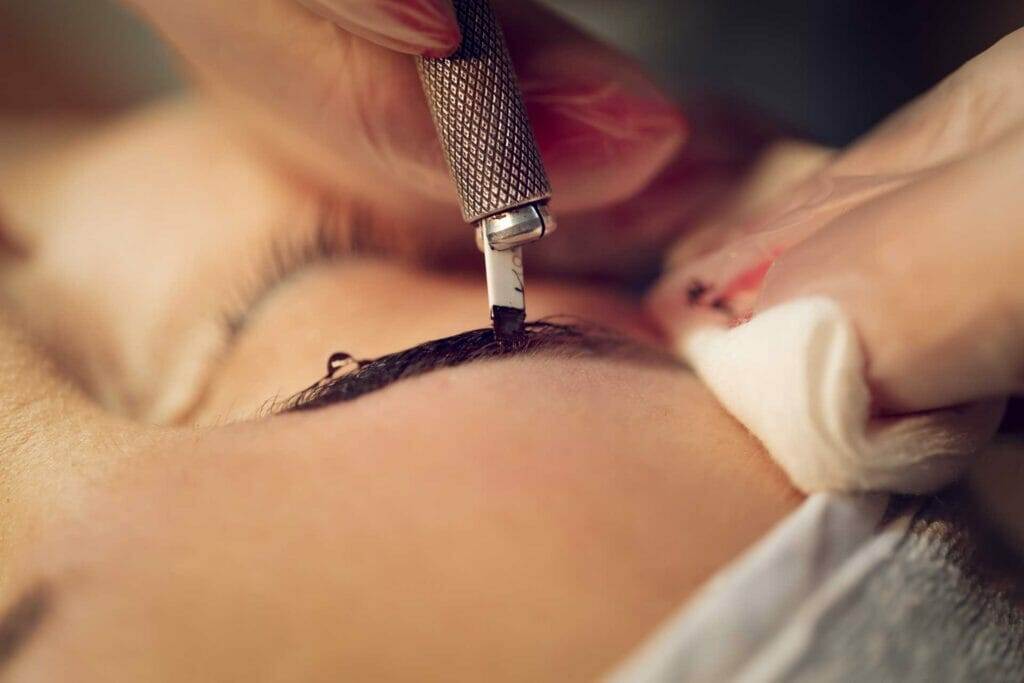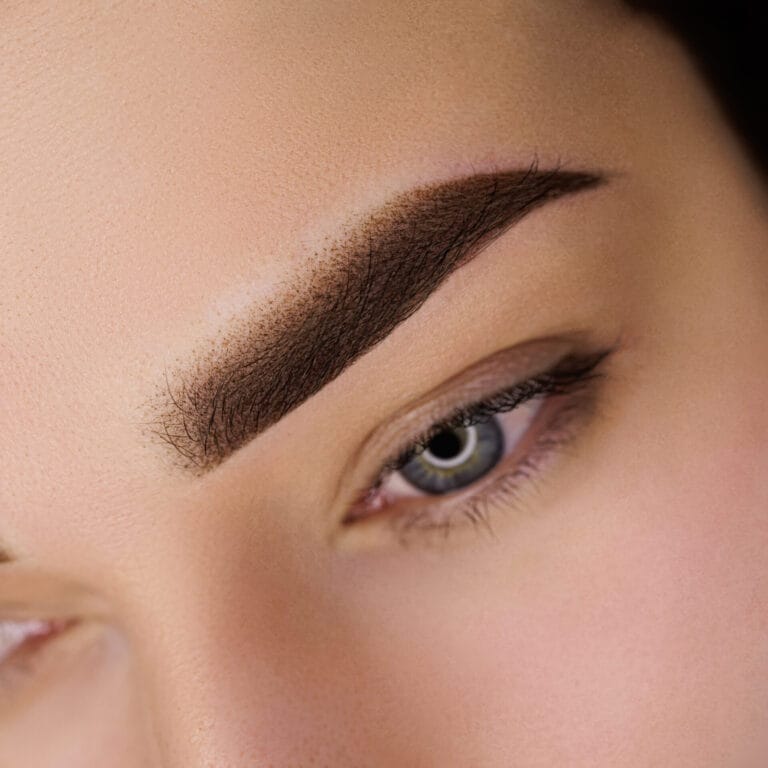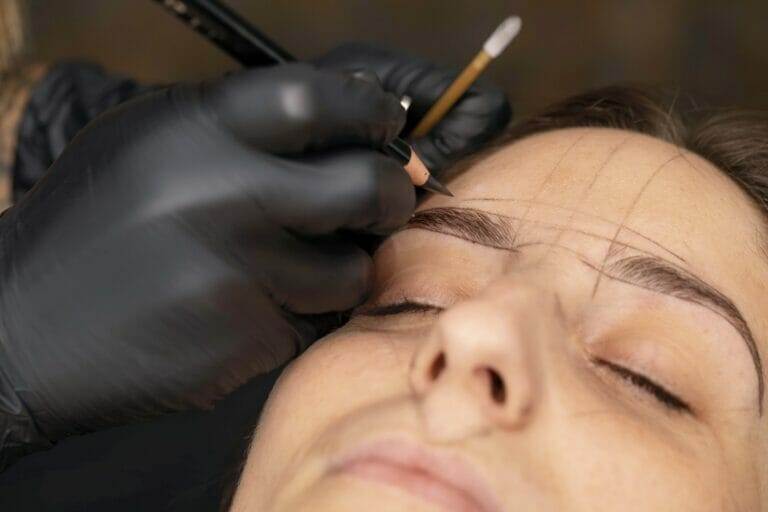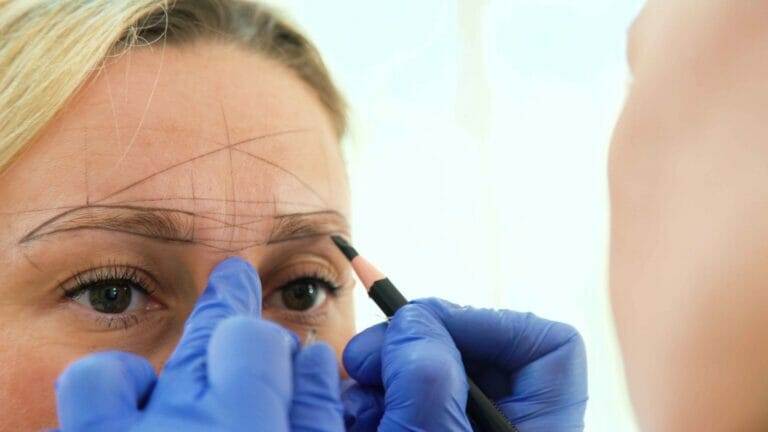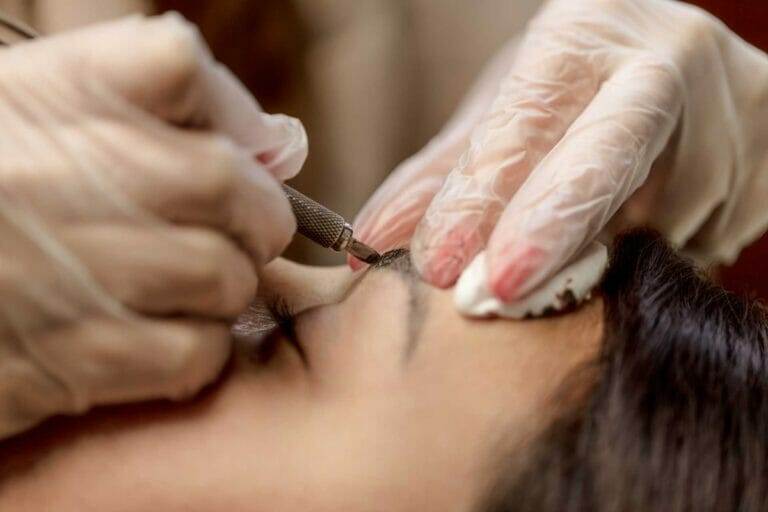Microblading has become increasingly popular in the beauty industry in recent years. This semi-permanent makeup technique allows individuals to achieve perfectly shaped and defined eyebrows that last for months. With its ability to enhance and transform the appearance of eyebrows, microblading has gained a loyal following and has become a sought-after service in many beauty salons.
What is Microblading and How Does it Work?
Microblading is a form of cosmetic tattooing that involves manually depositing pigment into the upper layers of the skin to create natural-looking eyebrows. Unlike traditional eyebrow tattooing, which uses a machine, microblading uses a handheld tool with a series of fine needles to create hair-like strokes. This technique allows for precise control and the ability to mimic the appearance of real eyebrow hairs.
The process begins with a consultation, where the client’s desired eyebrow shape and style are discussed. The technician then uses a pencil to sketch out the shape of the eyebrows, taking into consideration the client’s facial features and bone structure. Once the client is satisfied with the shape, the technician begins the microblading process.
The Importance of Achieving the Perfect Arch in Microblading
The arch is an essential element in microblading as it helps to frame the face and create a more youthful appearance. A well-defined arch can lift the eyes and give the face a more symmetrical look. Achieving the perfect arch requires careful consideration of the client’s facial features and bone structure.
To achieve the perfect arch, it is important to start by mapping out the natural shape of the client’s eyebrows. This can be done by using a ruler or measuring tool to determine where the arch should be placed. Once the arch is mapped out, the technician can begin creating hair-like strokes that follow the natural direction of hair growth.
Understanding the Different Eyebrow Shapes and Styles
There are various eyebrow shapes and styles to choose from, and it is important to select the right one for each client. The shape of the eyebrows should complement the client’s facial features and enhance their natural beauty.
Some common eyebrow shapes include:
– Soft Arch: This shape has a gentle curve and is suitable for individuals with round or square faces.
– High Arch: This shape has a more dramatic curve and is ideal for individuals with oval or heart-shaped faces.
– Straight Brow: This shape has little to no arch and is suitable for individuals with long or rectangular faces.
When choosing the right shape for a client, it is important to consider their facial features, such as the shape of their eyes and the size of their forehead. It is also important to take into account their personal style and preferences.
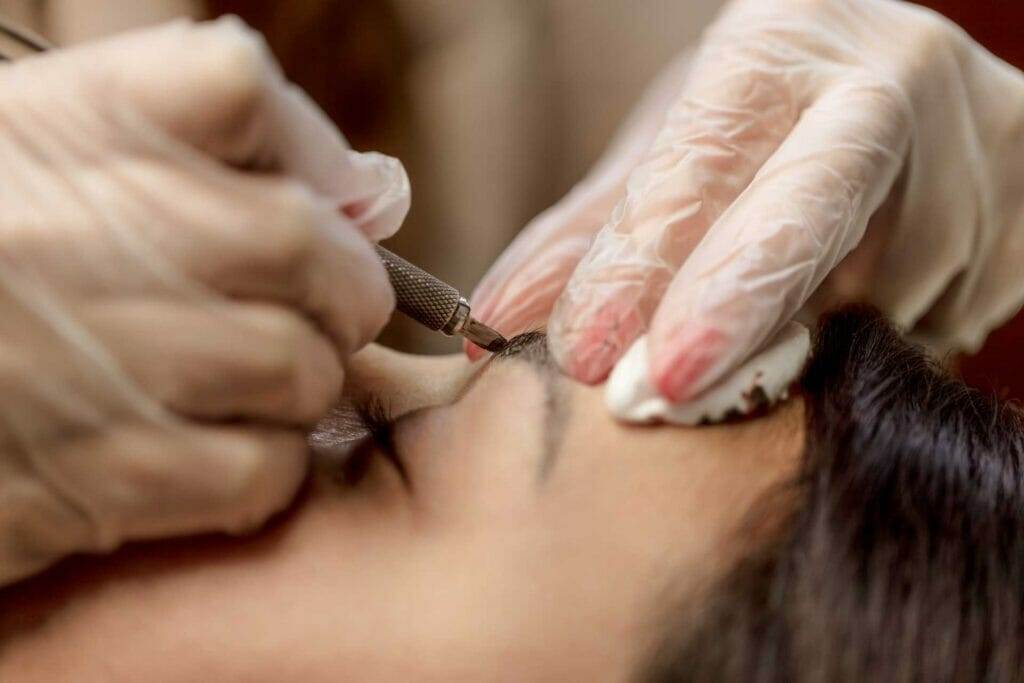
Choosing the Right Pigment for Your Client’s Skin Tone
Choosing the right pigment is crucial in achieving natural-looking results in microblading. The pigment should match the client’s skin tone and hair color to create a seamless and realistic appearance.
When selecting a pigment, it is important to consider the client’s undertones. Undertones can be warm, cool, or neutral, and they play a significant role in determining which pigment will look most natural on the client’s skin. Warm undertones typically have a yellow or golden hue, while cool undertones have a pink or blue hue. Neutral undertones have a mix of warm and cool tones.
To match the pigment to the client’s skin tone, it is recommended to test different shades on their skin before the microblading procedure. This can be done by applying a small amount of pigment to an inconspicuous area of the skin and observing how it blends with their natural color.
Preparing the Client for Microblading: Consultation and Patch Testing
Before performing microblading, it is essential to have a thorough consultation with the client. During this consultation, the technician should discuss the client’s expectations, desired shape, and style of eyebrows. It is important to manage the client’s expectations and ensure that they understand the limitations of the procedure.
In addition to the consultation, it is also important to perform a patch test on the client’s skin. This involves applying a small amount of pigment to a small area of the skin and observing for any adverse reactions. Patch testing is crucial in identifying any allergies or sensitivities that the client may have to the pigment or other products used during the procedure.
The Tools and Equipment You Need for Microblading
To perform microblading, you will need a variety of tools and equipment. These include:
– Microblading pen: This is a handheld tool with a series of fine needles that are used to create hair-like strokes.
– Pigments: These are used to color the eyebrows and can be selected based on the client’s skin tone and hair color.
– Numbing cream: This is applied to the eyebrows before the procedure to minimize discomfort.
– Disposable gloves: These are worn by the technician to maintain hygiene during the procedure.
– Microbrushes: These are used to apply numbing cream and pigments.
– Alcohol wipes: These are used to clean the skin before and after the procedure.
– Cotton pads: These are used to remove excess pigment and clean the skin.
– Aftercare products: These include ointments or creams that are applied to the eyebrows after the procedure to promote healing.
When choosing tools and equipment for microblading, it is important to select high-quality products that are safe and effective. It is also important to regularly clean and sterilize your tools to maintain hygiene standards.
The Step-by-Step Process of Microblading: From Sketching to Final Touches
The microblading process involves several steps, from sketching the shape of the eyebrows to adding the final touches. Here is a step-by-step guide to the process:
1. Consultation: Begin by having a thorough consultation with the client to discuss their desired shape and style of eyebrows.
2. Mapping: Use a pencil to map out the shape of the eyebrows, taking into consideration the client’s facial features and bone structure.
3. Numbing: Apply a numbing cream to the eyebrows to minimize discomfort during the procedure.
4. Microblading: Using a microblading pen, create hair-like strokes that follow the natural direction of hair growth. Fill in any sparse areas and create a defined arch.
5. Pigment application: Apply the selected pigment to the eyebrows, ensuring that it matches the client’s skin tone and hair color.
6. Final touches: Clean the eyebrows with alcohol wipes and remove any excess pigment. Apply aftercare products to promote healing.
Common Mistakes to Avoid in Microblading and How to Fix Them
While microblading can produce stunning results, there are some common mistakes that technicians should avoid. These include:
– Uneven or asymmetrical eyebrows: To avoid this mistake, it is important to carefully measure and map out the shape of the eyebrows before beginning the microblading process. It is also important to regularly step back and assess the symmetry of the eyebrows during the procedure.
– Overfilled or unnatural-looking eyebrows: To avoid this mistake, it is important to use a light hand when applying pigment and create hair-like strokes that mimic the appearance of real eyebrow hairs. It is also important to select a pigment that matches the client’s skin tone and hair color.
– Infection or adverse reactions: To avoid this mistake, it is important to maintain strict hygiene standards during the procedure. This includes regularly cleaning and sterilizing your tools, using disposable gloves, and following proper aftercare instructions.
If any mistakes do occur during the microblading process, it is important to address them promptly. This may involve adjusting the shape or color of the eyebrows or providing additional aftercare instructions to the client.
Aftercare and Maintenance: Ensuring Long-Lasting Results for Your Clients
Aftercare is crucial in ensuring that the results of microblading last as long as possible. It is important to provide clients with detailed aftercare instructions and to follow up with them after the procedure.
Some important aftercare tips include:
– Avoid getting the eyebrows wet for at least 24 hours after the procedure.
– Avoid touching or scratching the eyebrows.
– Avoid exposure to direct sunlight or tanning beds.
– Apply aftercare products as instructed by the technician.
– Avoid using makeup or skincare products on or around the eyebrows.
Regular touch-ups are also necessary to maintain the appearance of microbladed eyebrows. The frequency of touch-ups will vary depending on the client’s skin type and lifestyle, but they are typically recommended every 6-12 months.
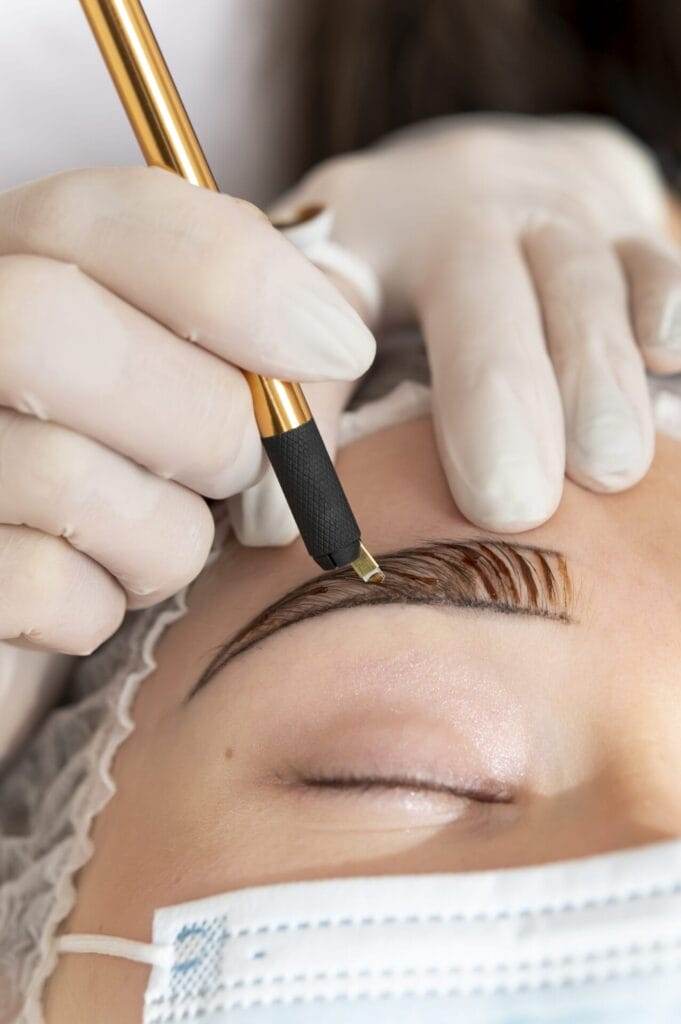
Mastering the Art of Microblading and Building a Successful Career in the Beauty Industry
Microblading is an art form that requires skill, precision, and attention to detail. By mastering this technique, beauty professionals can offer their clients a highly sought-after service that can enhance their natural beauty and boost their confidence.
To build a successful career in the beauty industry through microblading, it is important to continually refine your skills and stay up-to-date with the latest trends and techniques. This may involve attending workshops, training programs, or conferences related to microblading.
By providing exceptional service and achieving stunning results, you can build a loyal client base and establish yourself as a trusted expert in the field of microblading. With dedication and passion, you can turn your love for microblading into a rewarding and fulfilling career in the beauty industry.



